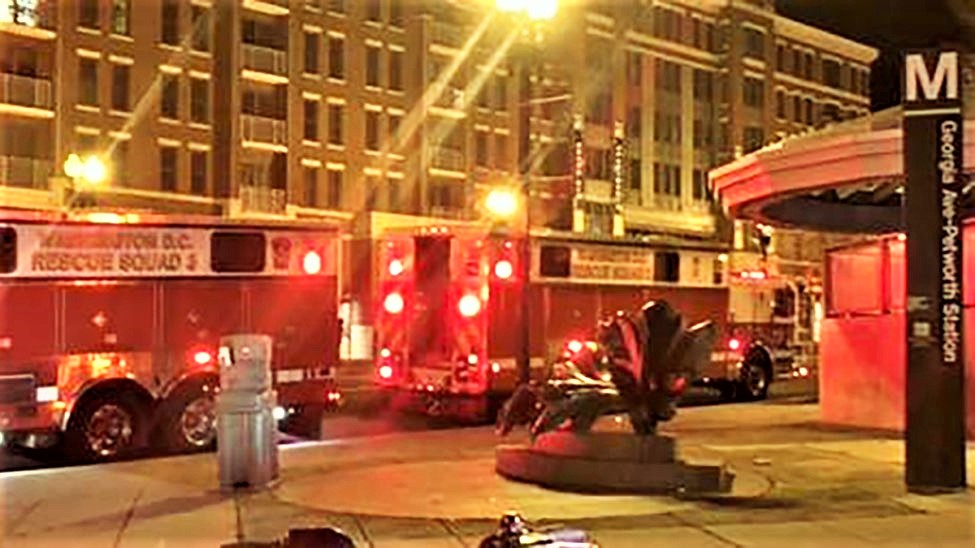NEW: Metro confirms safety lapses at two more incidents
Third rail safety device not used during December evacuation and control center gave inaccurate info to 911 after worker hurt in February

Looking for a quality used fire truck? Selling one? Visit our sponsor Command Fire Apparatus
Metro tells STATter911 its investigations identified safety lapses during two separate rail emergencies near the Fort Totten Metro Station. In one case, Metro workers did not use a warning device to confirm third rail power remained off during the evacuation of two stranded trains. In another, Metro’s Rail Operations Control Center (ROCC) failed to give accurate information to DC 911 after a worker was hurt inside a tunnel. This adds to a long list of safety concerns identified by both Metro and the Washington Metrorail Safety Commission over the last 16 months.
After a breaker tripped on December 13, two trains stalled on the Green/Yellow line between Fort Totten and Georgia Avenue-Petworth. Metro handled the evacuation of the trains, but at one point in the operation alerted DC Fire & EMS. Metro workers confirmed power was down before the evacuation, but failed to attach devices that would let Metro and rescuers know if power was accidentally restored.
The devices are known as WSADs. The acronym stands for “Warning Strobe and Alarm Device”. For decades, both Metro and area fire departments have made the use of WSADs standard procedure when working along tracks where the third rail has been de-energized. A Metro spokesperson told STATter911 that actions taken after serious safety failures when a train stalled near the Rhode Island Avenue Station in March also apply to some of the findings from the December incident. Here’s the complete statement:
Review found rail supervisor confirmed rail was de-energized with a hot stick before Metro personnel evacuated passengers on the non-third rail side of the tunnel. WSADs were available, but incident command (IC) failed to ensure they were in use before the evacuation. To prevent recurrence, WMATA will be developing an incident response / incident control check list that identifies the roles/responsibilities, respective equipment, and response process upon IC arrival. The additional mitigations from the March 26 incident noted above would also apply to this incident. Note that FD personnel were on the platform to assist with the evacuation if needed, but never entered the roadway.
In the second incident, a Metro worker injured his leg inside a tunnel near the Fort Totten Metro Station on February 27. As STATter911 reported via Twitter shortly after the worker was hurt, it was clear there was another communications breakdown between Metro’s ROCC and DC 911. It took almost a half-hour before DC Fire & EMS was told there was an injured worker inside the tunnel. For much of that time fire and EMS searched for a sick person inside the Fort Totten Metro Station. In answer to questions from STATter911, Metro confirms the failure to communicate started inside ROCC:
Hi Dave — your initial assessment was correct, the initial information provided by ROCC to OUC was incomplete and inaccurate despite the 10:16 am notification to ROCC of the correct position of injured employee from a supervisor at the scene. Review of this incident identified communications failures that have been addressed with ROCC personnel, including the need to be as specific as possible when requesting emergency services so resources can be deployed properly with the equipment needed to handle an incident.
Many of the communications failures evident on February 27 were repeated a month later at the stalled train incident near Rhode Island Avenue. Metro and DC’s Office of Unified Communications (OUC or DC 911) have now provided STATter911 with conflicting information about the March 26 incident. OUC told STATter911 its first notification of the stranded train came from a passenger at 4:57 p.m. In its timeline, OUC doesn’t indicate it was contacted by ROCC. Metro says OUC was notified and given detailed information:
At approximately 4:59 p.m. the ROCC Fire Liaison Officer (FLO) notified DCFD FLO at OUC via phone and reported, “I need an assignment for a stranded train at Rhode Island Metro Station. I got one requesting EMS, and a train stuck a couple of hundred feet from the platform on an elevated structure. 109 customer on-board, one person requesting EMS right now, and they are in the process of moving the train back to the platform right now.”
Poor communications between Metro’s ROCC and DC 911 is a decades old problem. The National Transportation Safety Board cited serious communications failures at ROCC and OUC after the 2015 fatal fire in a tunnel near the L’Enfant Plaza Metro Station.

